MIL or MOA? How to use them?
March 23th, 2023
Like and follow us if helpful
Evelyn: Stephen, when choosing rifle scopes, I noticed that there are mainly two measurement systems for elevation and windage adjustment: MIL and MOA, can you explain to me what are the differences of the two systems, and how to use them?
Stephen: Sure. First, do you know what is MIL and MOA?
Evelyn: I know that MIL stands for Milliradian, and MOA stands for Minute of Angle.
Stephen: Yes, they are both measurement of an angel within a circle, but they differ in size. Now let me explain in details, I will start from MOA as it is the most popular measurement system among shooters in the U.S.
Evelyn: MOA is 1⁄60 of one degree, right?
Stephen: Yes, like one hour is divided into 60 minutes, 1 degree is divided into 60 minutes of angle, and 1 minute of angle is 1 MOA. Check out picture 1 for reference.
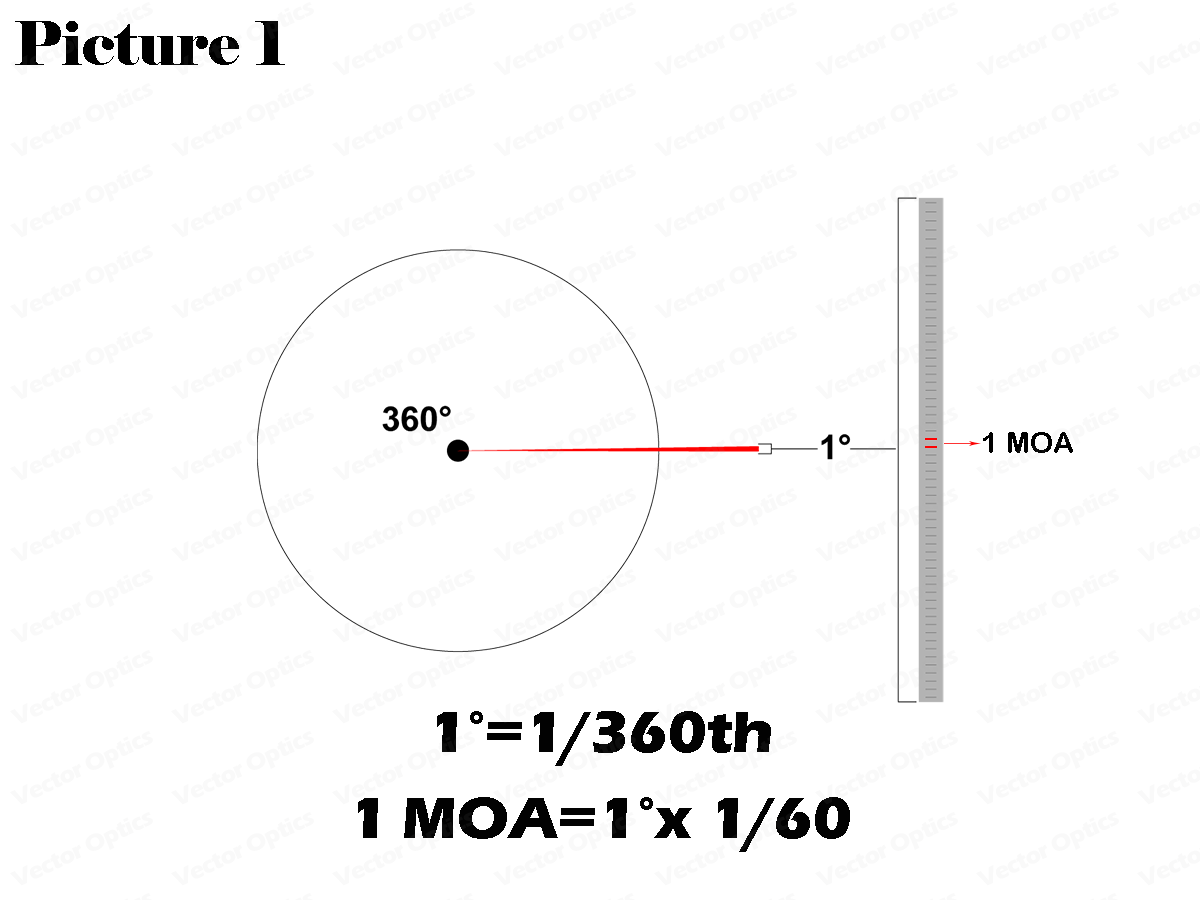
Evelyn: I see, but how much does a MOA measure in terms of distance?
Stephen: If you are using yards, then 1 MOA approximately equals to 1 inch(1.047”) at 100 yards, 2 inches at 200 yards and so on; If you are using meters, then 1 MOA approximately equals to 2.9cm at 100m, 5.8cm at 200m, and so on. Check out Picture 2 for reference.
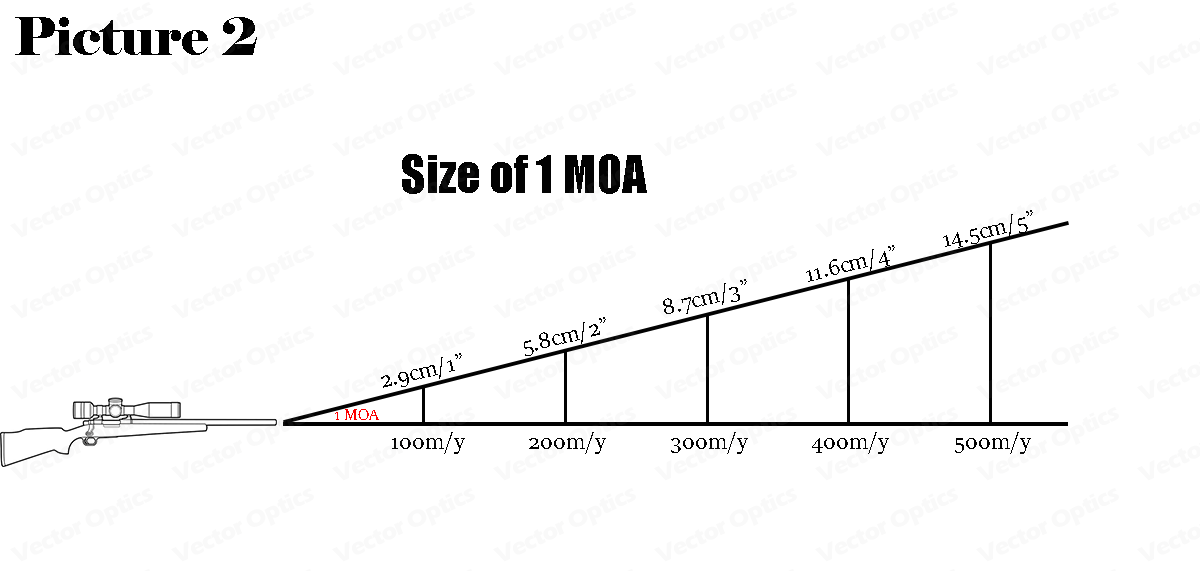
Evelyn: I have a question. When using MOA scopes, I noticed :1 click =1/4 MOA @ 100yd on the turret cap. What does it mean?
Stephen: 1/4 MOA is 1/4th of an inch at 100 yards. So if the bullet impact is an inch high at 100 yards, you need to adjust 4 clicks down to correct it.
Evelyn: I see. So if the bullet drops 4 inches at 200 yards, it means that the shooter need to adjust 2 MOA, 8 clicks up to correct it right?
Stephen: Yes, when you know your bullet drop, you can make appropriate adjustments to ensure your target is hit next time. Take the upper example, at 200 yards, 1 MOA equals to 2 inches, so the bullet drops 4 inches means that it drops 2 MOA, so we need 2 MOA adjustment.
Evelyn: So the MOA formula for adjustment would be this:
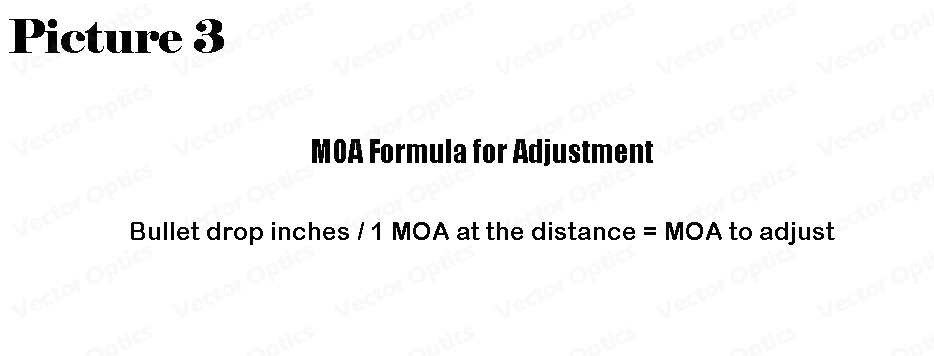
Stephen: That’s correct! Now let’s move on to MIL adjustment.
Evelyn: Yes, MIL means Milliradian, but what is Milliradian?
Stephen: MIL or MRAD stands for Milliradian and represents 1/1000 of a radian, it is mostly used in military and tactical precision riflescopes. Do you know what is a radian?
Evelyn: I’m not sure, can you explain to me?
Stephen: So a radian is a unit of angle, equal to an angle at the center of a circle whose arc is equal in length to the radius. A radian contains 1000 MILs, so 1MIL equals to 1/1000 radians. At 1 radian, the length equals to the circle's radius(your shooting distance), so at 1 MIL, the length equals to 1/1000 of your shooting distance. Please check out picture 4 for reference.
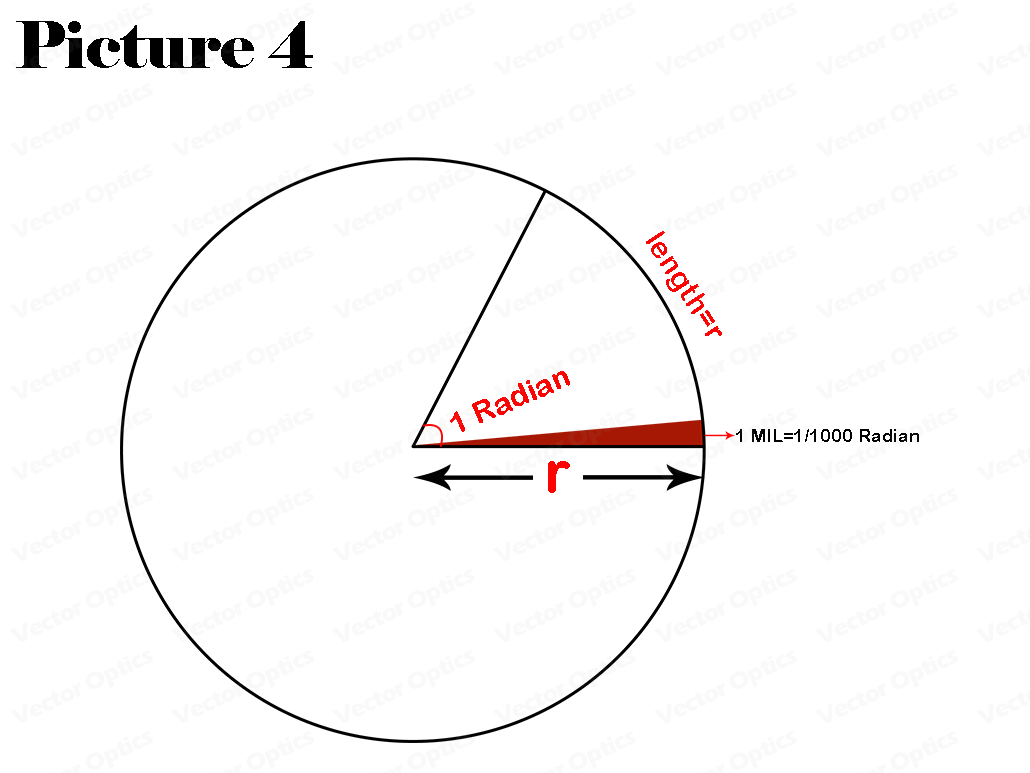
Evelyn: Gotcha! How much is 1 MIL at a certain distance?
Stephen: As I just mentioned, 1 MIL equals to 1/1000 of any shooting distance. So 1 MIL is 1 meter at 1000 meters, and 1 yard(36”) at 1000 yards. Then 1 MIL is approximately 10cm at 100m, 20cm at 200m and so on. Likewise, 1MIL is approximately 3.6 inches at 100 yards, 7.2 inches at 200 yards and so on. Check out picture 5 for reference.
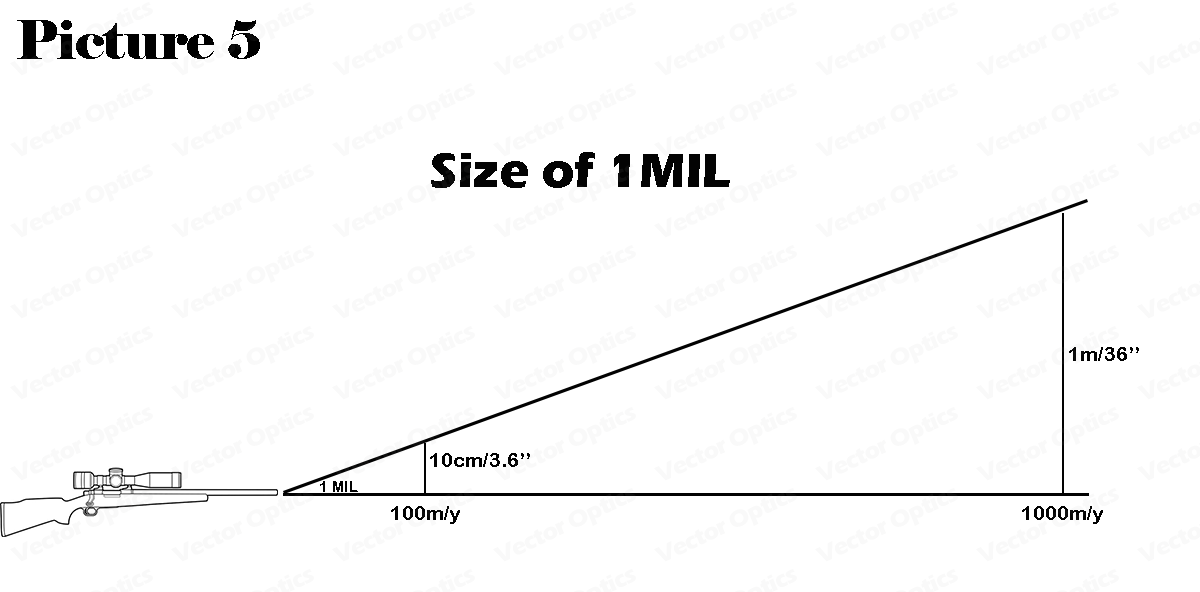
Evelyn: I see. So if the scope’s click value is 1/10MIL, that means if your POI(point of impact) is 10cm higher than your POA(point of aim) at 100m, you need to adjust down by 10 clicks, right?
Stephen: That’s correct. If you want to measure for distance or target size with MIL dots, here’s the formula in picture 6.
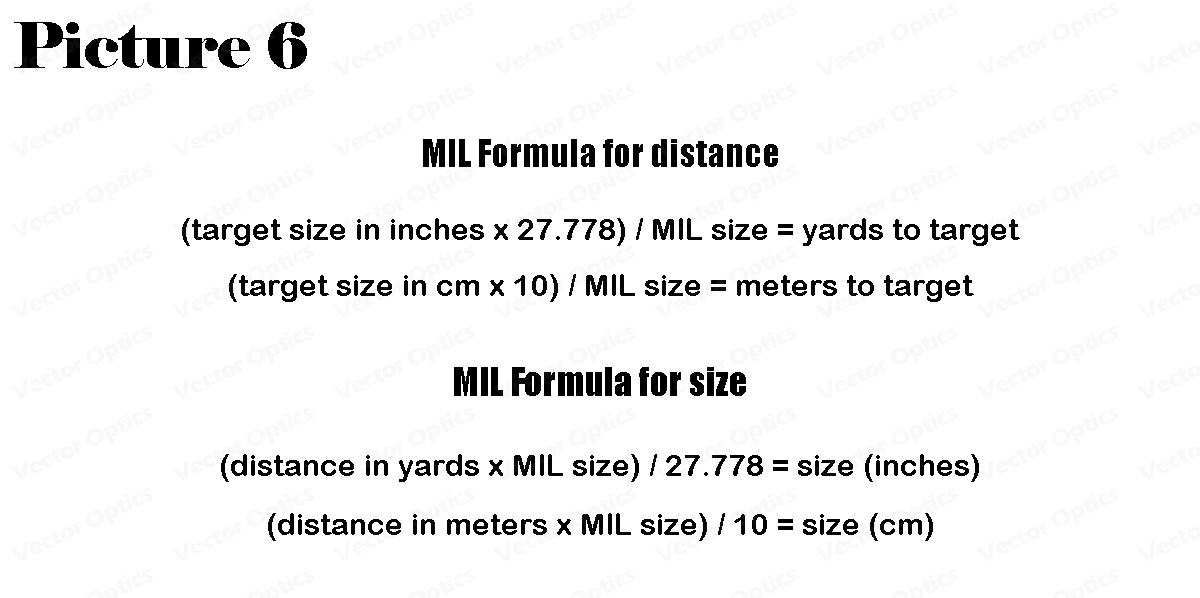
Evelyn: Got it! So which measurement system is better? MOA or MIL?
Stephen: It’s more of a habitual thing. If you are used to the imperial system, then you might find MOA more suitable to you; If you are comfortable with the metric system, then you might choose MIL over MOA.
Evelyn: I see, I have learned a lot today, thank you!

































